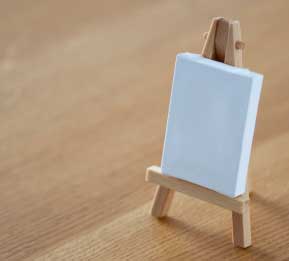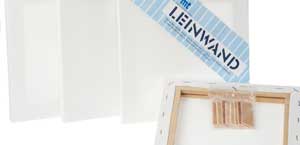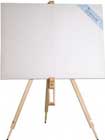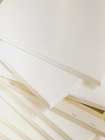
It is usually made of fiber, flax or a mixture of cotton and synthetic fibers. In order to capture well the paint and keep it safe from spilling, it is coated with a primer before use.
In order to fit on the easel, the canvas must be held with a frame or glued to a panel of wood or cardboard for rigidity.
Professional artists usually use linen because its quality is superior. However, cotton canvas is a more economical alternative.
We talk about canvas frame when the fabric is stretched directly above. There are many forms of frame (square, round, oval, rectangular) to adapt to all creation and all the desires of painters. In general, the vertical table called "Figure" or F is used for portraits, horizontal format called "Landscape" or L for landscapes and finally a horizontal or panoramic format, called "Marine" or M. Canvas is used by most artists, it is a light support, easy to carry and easy to repair in case of breakage. To ensure a good performance of the paint, the canvas is pre-coated with adhesive and white or colored pigments.
Among the commonly used frame, we can cite the stretched cotton or linen canvas panels.
It is also possible to buy coated fabrics in cotton or linen separately, ie not previously set on a frame. This allows to choose the canvas and frame separately. It is also very convenient for artists who prefer to paint on the canvas laid flat on a full backup, then stretch it on the chassis. To satisfy all tastes and allow multiple artistic effects, there are many types of coated fabrics in cotton or linen. The elements that most often change are the texture (regular, fine, medium grain ...), weight, and the primer used. Some primers are more or less absorbent to provide different results when in contact with the paint.
Finally, there are raw canvas, which require preparation before use. The different steps of this preparation are gluing and coating but can not be used to give rise to unique effects. On highly absorbent or permeable fabric, colors tend to crash into the frames and embrace the texture of the canvas. This allows for a wide range of effects and play on the asperities to provide relief prints. Instead, on a less absorbent or permeable surface, the colors tend to drop more gently and reveal the slightest movement of brushes.





